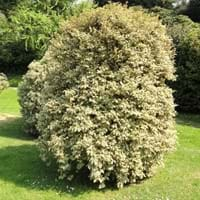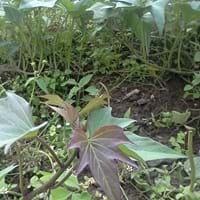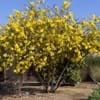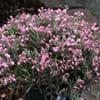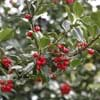Life Span
Perennial
Annual and Perennial
Type
Broadleaf Evergreen
Bulb or Corm or Tuber
Origin
Eastern Asia, China, Japan, Korea
Latin America and the Caribbean, Central America, Micronesia
Types
Cleyera japonica ‘Tricolor’
Hannah Yams, Japanese Sweet Potatoes
Habitat
Warmer regions
Cold Regions, Tropical regions
USDA Hardiness Zone
6-10
11-12
AHS Heat Zone
Not Available
12-1
Habit
Oval or Rounded
Vining/Climbing
Minimum Width
Not Available
Flower Color
White, Yellow
Not Available
Flower Color Modifier
Bicolor
Bicolor
Fruit Color
Yellow, Red, Bronze
Not Available
Leaf Color in Spring
Red, Dark Green, Bronze
Green, Purple, Light Green, Chartreuse, Bronze
Leaf Color in Summer
Dark Green
Light Green
Leaf Color in Fall
Dark Green
Several shades of Green
Leaf Color in Winter
Dark Green, Burgundy, Bronze
Light Green
Leaf Shape
Ovate
Heart-shaped
Plant Season
Spring, Summer, Fall, Winter
Spring, Summer, Fall, Winter
Sunlight
Full Sun, Partial Sun, Partial shade, Full Shade
Full Sun, Partial Sun
Growth Rate
Slow
Very Fast
Type of Soil
Clay, Loam, Sand
Clay, Loam, Sand
The pH of Soil
Acidic, Neutral
Acidic, Neutral, Alkaline
Soil Drainage
Well drained
Well drained
Bloom Time
Late Spring, Early Summer
Late Fall, Early Winter, Winter
Tolerances
Drought, Salt
Drought
Where to Plant?
Container, Ground, Pot
Ground, Pot
How to Plant?
Tip cutting
Stem Cutting, Tuber propagation
Plant Maintenance
Medium
Medium
Watering Requirements
Water 1 in. per week during the active growing period, Water more frequently during periods of extreme drought
Average Water Needs, Needs a lot of water initially
In Summer
Lots of watering
Lots of watering
In Spring
Moderate
Moderate
In Winter
Average Water
Average Water
Soil pH
Acidic, Neutral
Acidic, Neutral, Alkaline
Soil Type
Clay, Loam, Sand
Clay, Loam, Sand
Soil Drainage Capacity
Well drained
Well drained
Sun Exposure
Full Sun, Partial Sun, Partial shade, Full Shade
Full Sun, Partial Sun
Pruning
Remove damaged leaves, Remove dead branches, Remove dead leaves
Remove damaged leaves, Remove dead branches, Remove dead leaves
Fertilizers
All-Purpose Liquid Fertilizer
All-Purpose Liquid Fertilizer
Pests and Diseases
Red blotch
Aphids, Beetles, Leafminers, Red blotch
Plant Tolerance
Drought
Drought
Flowers
Insignificant
Showy
Flower Petal Number
Single
Single
Foliage Texture
Medium
Coarse
Foliage Sheen
Glossy
Matte
Attracts
Bees, pollinators
Aphids, Beetles, Mites, white worms
Allergy
Mild Allergen
Abdominal pain, Skin rash, Swelling, Vomiting
Aesthetic Uses
Cottage Garden, Formal Garden, Informal Hedge, Landscape Designing, Mixed Border, Used for making hedges, Used in parkland
Not Used For Aesthetic Purpose
Beauty Benefits
Not Available
Not Available
Environmental Uses
Air purification
Air purification
Medicinal Uses
Not Available
Potassium, ß-carotene, Vitamin C
Part of Plant Used
extracted oil, Leaves, Seeds, Stem
Leaves, Root, Shoots
Other Uses
Used as a building material, Used as fuel
Used As Food, Used for its medicinal properties
Used As Indoor Plant
Yes
Yes
Used As Outdoor Plant
Yes
Yes
Garden Design
Container, Feature Plant, Foundation, Hedges, Houseplant, Mixed Border, Screening, Wind Break, Topiary, Bonsai, Espalier
Container, Edible, Groundcover, Hanging Basket, Herb / Vegetable, Mixed Border, Vine
Botanical Name
TERNSTROEMIA gymnanthera 'Conthera'
IPOMOEA batatas
Common Name
Cleyera Japonica, Sakaki Tree, Japanese ternstroemia
Sweet Potato, Sweet Potato Vine
In German
Sakaki
Süßkartoffel
In French
Cleyera
Patate douce
In Spanish
Cleyera
Batata
In Greek
Cleyera
Γλυκοπατάτα
In Portuguese
Cleyera
Batata doce
In Polish
Cleyera
Słodki ziemniak
In Latin
Ternstroemia Gymnanthera
Dulcis SOLANUM TUBEROSUM
Phylum
Tracheophyta
Magnoliophyta
Class
Magnoliopsida
Magnoliopsida
Family
Theaceae
Convolvulaceae
Clade
Angiosperms, Asterids, Eudicots
Angiosperms, Asterids, Eudicots
Tribe
Freziereae
Not Available
Subfamily
Not Available
Not Available
Season and Care of Cleyera and Sweet Potato
Season and care of Cleyera and Sweet Potato is important to know. While considering everything about Cleyera and Sweet Potato Care, growing season is an essential factor. Cleyera season is Spring, Summer, Fall and Winter and Sweet Potato season is Spring, Summer, Fall and Winter. The type of soil for Cleyera is Clay, Loam, Sand and for Sweet Potato is Clay, Loam, Sand while the PH of soil for Cleyera is Acidic, Neutral and for Sweet Potato is Acidic, Neutral, Alkaline.
Cleyera and Sweet Potato Physical Information
Cleyera and Sweet Potato physical information is very important for comparison. Cleyera height is 2,240.00 cm and width 150.00 cm whereas Sweet Potato height is 60.00 cm and width Not Available. The color specification of Cleyera and Sweet Potato are as follows:
Cleyera flower color: White and Yellow
Cleyera leaf color: Red, Dark Green and Bronze
Sweet Potato flower color: Not Available
- Sweet Potato leaf color: Green, Purple, Light Green, Chartreuse and Bronze
Care of Cleyera and Sweet Potato
Care of Cleyera and Sweet Potato include pruning, fertilizers, watering etc. Cleyera pruning is done Remove damaged leaves, Remove dead branches and Remove dead leaves and Sweet Potato pruning is done Remove damaged leaves, Remove dead branches and Remove dead leaves. In summer Cleyera needs Lots of watering and in winter, it needs Average Water. Whereas, in summer Sweet Potato needs Lots of watering and in winter, it needs Average Water.
